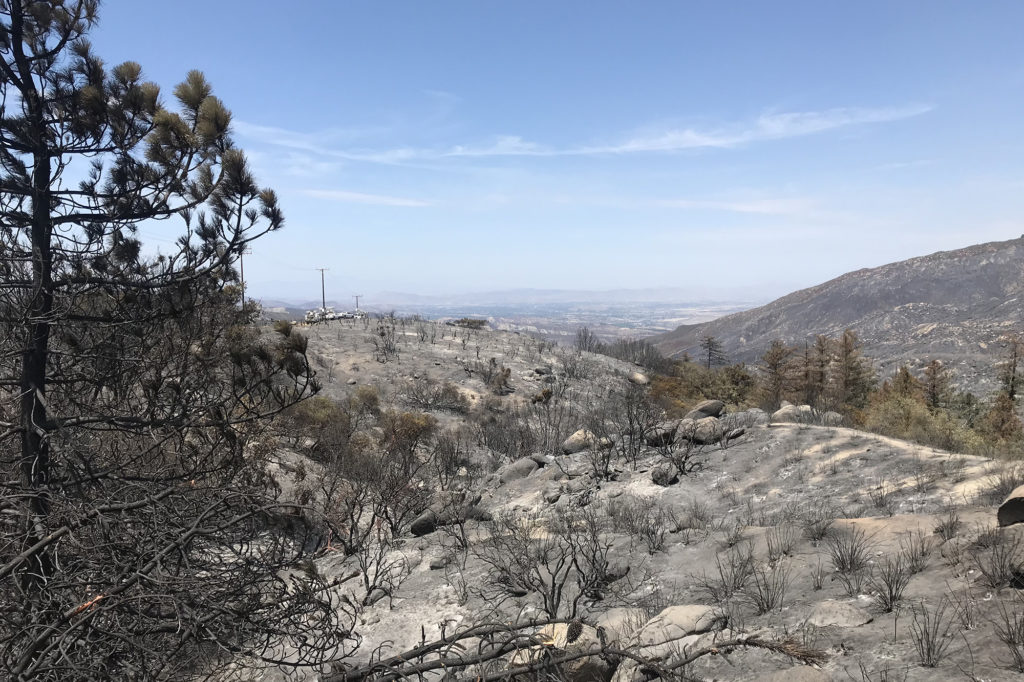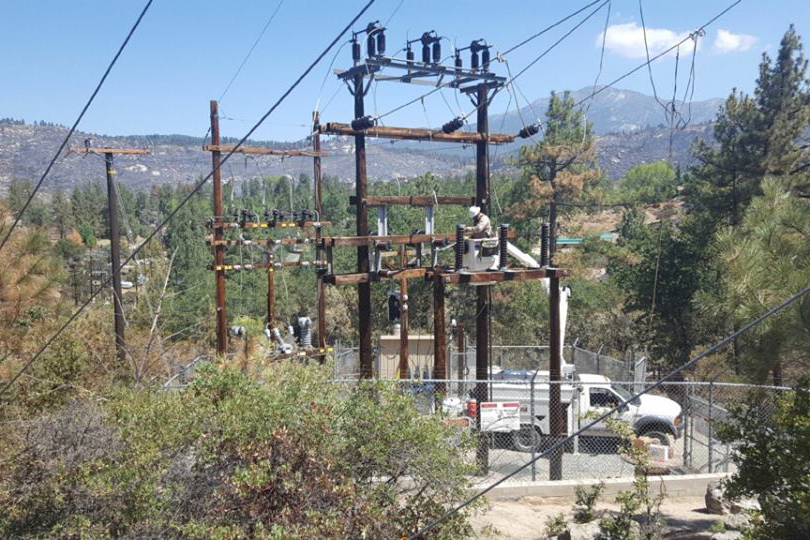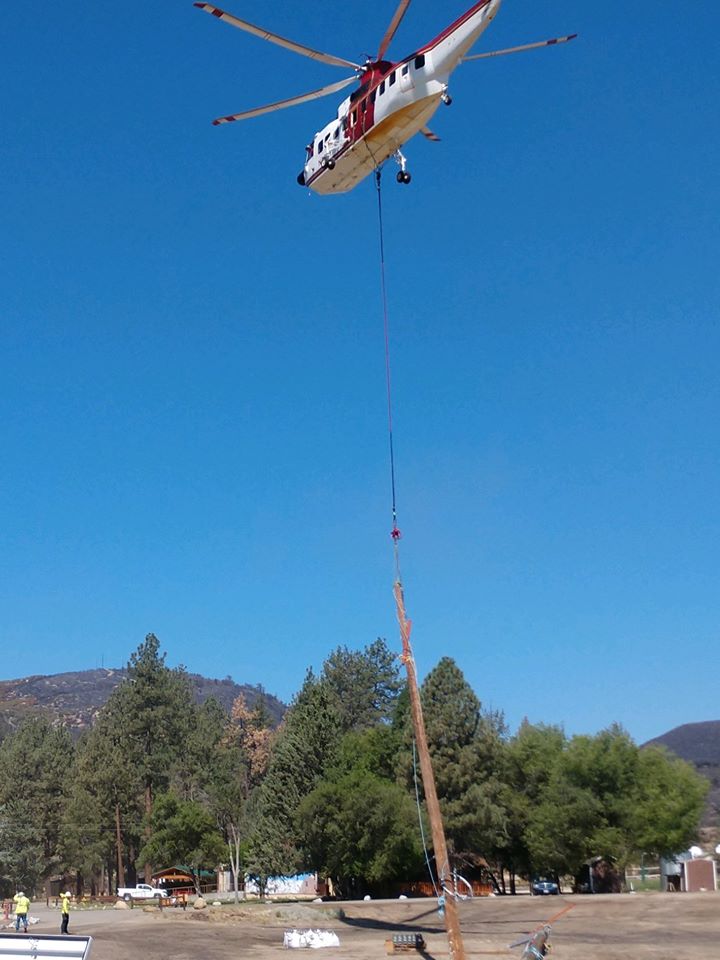
Ten days of wildfire-related problems are over for members of a Southern California electric cooperative—which was able to do some system upgrades early as part of the repairs.
Anza Electric Cooperative wrapped up a 50-step reboot of its distribution system late Aug. 3, ending service rotations and air-conditioning restrictions imposed after the Cranston wildfires burned up two miles of Anza Electric’s only transmission line, which is owned by Southern California Edison. When service went down July 25, the co-op was already working out details on an emergency plan with its power provider, Arizona Generation and Transmission Cooperatives.
A fleet of five trailer-mounted generators kept power on consistently through most of Anza EC’s territory. The co-op urged members to forgo air conditioning to help limit demand.
“We suggested evaporative cooling from so-called swamp coolers as an alternative,” said Kevin Short, CEO and general manager of Anza EC. “Keeping some power available allowed our members to provide basic services like pumping water from their wells, keeping electronic devices charged, and maintaining telecommunications service.”
Throughout the Cranston outages, Anza EC’s office was open daily from 5 a.m. to 10 p.m.

“We were open for these hours because we were providing emergency contact information, outage information, and handing out bottled water,” said Short. “We felt that just being here when our members needed us was important. We also wanted to know what we could do to help beyond what we were already doing.”
Anza EC’s commitment stemmed from knowing exactly what members were going through. Many are long-distance commuters who make the daily trek into metropolitan San Diego and Los Angeles. The smoke and haze rising over the San Jacinto Mountains from the Cranston Fire were constant reminders of hardships facing residents who live in the high desert drylands, nearly 4,000 feet above sea level.
The co-op supported repair operations by allowing SCE crews and contractors to stage from its headquarters. The investor-owned utility made a massive push to get power restored, beating its estimate by several days.
A total of 80 line and civil engineering crews were involved in repair and replacement of nearly 130 overhead transmission structures. Nearly 40 vegetation management crews and 13 traffic control crews also supported repairs, with the help of 16 damage assessment teams and three helicopters.
“Each of those crews and teams had four or five members,” said Short. “They were setting poles by hand in rugged terrain, unreachable by vehicle, and SCE flew in compressors to help them complete the work.”
The fire repairs also provided an opportunity to expedite planned system upgrades that were expected to be completed in late 2018, Short said. “With crews, parts and equipment in place for the emergency work, transmission capacity is being enhanced, enabling the co-op to handle more power during periods of peak seasonal demand.”
Authorities have said the Cranston Fire, ignited by a series of arson blazes, is now more than 96 percent contained. Nearly 600 firefighters have been involved in its control and suppression.
The collective response to the fire has drawn praise and appreciation from affected co-op members.
“I was the wacky gal standing out there clapping for you guys as you pulled out,” wrote one member in a posting on Anza EC’s Facebook page. “All your hard work is so appreciated.”
Another member simply posted, “Your hard work means the world to us.”
Derrill Holly is a staff writer at NRECA.
